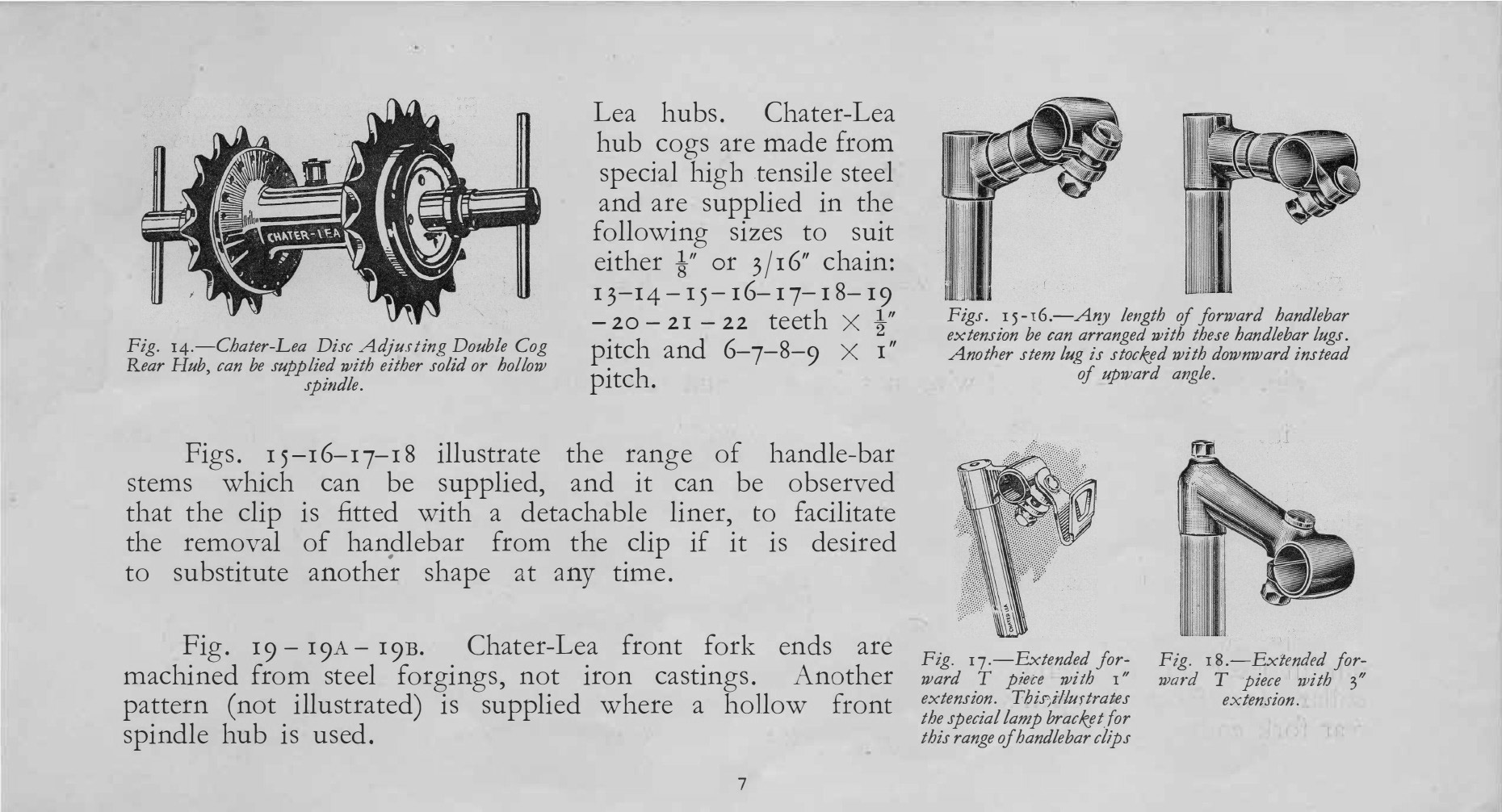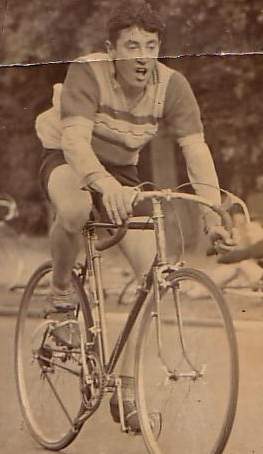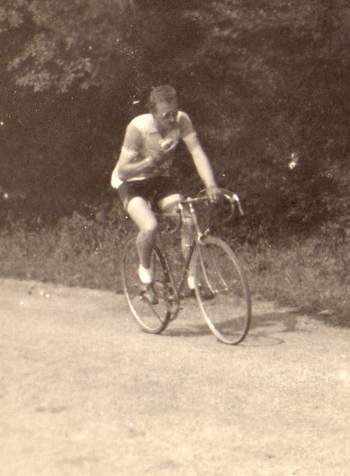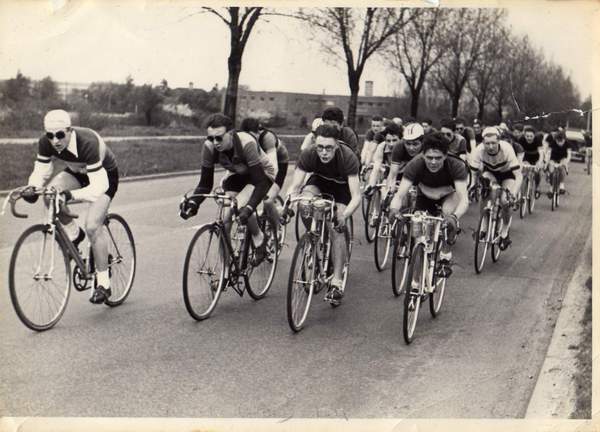Constrictor Osgear
Posted: Friday 12th June 2020
Cycling of 10 August, 1934 carried a news item proclaiming, “A New Derailleur Gear – Constrictors to Market Oscar Egg’s ‘Osgear’. Weight 12½ oz.”. The piece went on to say:
“A new derailleur gear is shortly to be marketed by the Constrictor Tyre Co. (Nursery Lane Works, Forest Gate, London E.7). It is to be known as the Constrictor Osgear Super Champion, the name ‘Osgear’ being a rearrangement of all but two letters of Oscar Egg, the famous Swiss-French cyclist, who is responsible for the design. The Constrictor concern has secured the sole British rights to market this device, and it is possible that, in the near future, the whole of the parts of the Osgear will be made in this country.

Its construction is light yet sturdy, and it is simple in operation. The rear hub carries a triple cog free-wheel, a thin circular metal plate being fitted inside the sprockets to protect the spokes from any excessive chain jump. Fitted to the chainstay is a guide arm, cable operated, that moves the chain right or left, as the case may be, in line with the selected sprocket.
Just behind the bracket is positioned the tensioning arm, that takes up the slack of the chain, the amount of which varies according to which sprocket is in use. The little pulley-wheel on this tensioning arm is mounted on ball bearings, but is without teeth, there being a guide-loop of metal to keep the chain in position. Fixed with a clip to the seat tube is another inverted “U” guide as an additional precaution to prevent the chain from jumping off the chain-wheel during a gear change.
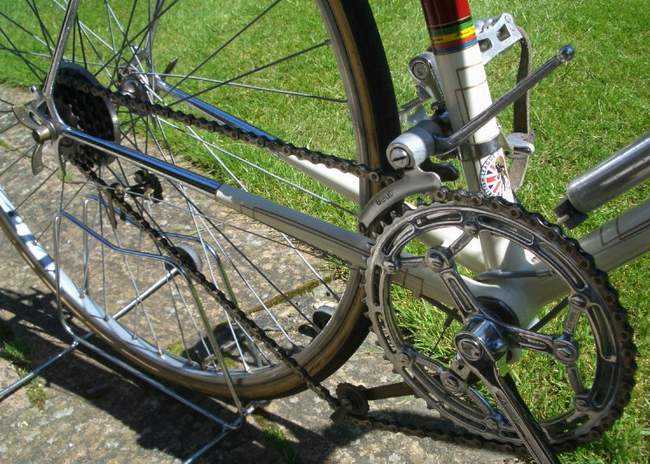
The control lever is positioned on the bottom tube behind the head. The quadrant on which the lever works is drilled with three holes into which a nipple on the lever engages, giving positive positioning for the three different gears. During a work-bench test we found the gear change quite smooth in both directions, but it should be noted that the lever has to be moved slightly beyond the positioning hole until the chain has jumped on to the sprocket required.
The whole of the metal work of the Osgear is duralumin, the total weight of the parts, less the triple-cog free-wheel, being only 12½ ozs. The Osgear is priced at 25s. or, with triple-cog free-wheel, 30s.”
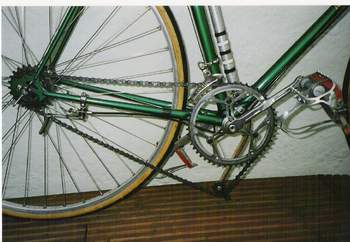
Here is an image of the drive train of a 1951 Gillott owned by John Spooner. It started as a 4-speed Osgear and was converted to 6-speed (has anyone else managed to do it?) plus a Benelux rod changer on the front.
This is the Osgear with a tension adjuster on the sprung arm and a second lever to reduce the chain tension for that extra bit of speed. It has Mil Remo steel cottered cranks with possibly Mil Remo rings. John says he drilled two extra holes in the gear lever to accommodate the extra gears.
I was interested in the article on Osgear. The photo (left) shows an Osgear with a 5-sprocket block and double chainwheel. A fixed arm was constructed so that the tension arm pivoted from beneath the bottom bracket. The frame is a Barnard, the bars Bartali. There were 3 of us in the Streatham C.R.C. who had Osgears at that time (circa 1952). One of the others I recall was Ron Hawes.
This Barnard didn’t have a brazed on bracket although I’m sure that as it was built to my own spec. I could have had one brazed on (incidentally the frame cost £12 10s). The position was altered by making a little arm (I think it was about 3″ long) which was attached to the bolt on clip.
24th August 2009 – Would Aub please contact Cecil Potterton at CJPott(at)blueyonder.co.uk as we have lost Aub’s email address and Cecil wishes to contact him again after 50+ years.
I rode an Osgear 1950-54 with the BLRC. Modifications were as already commented upon, i.e. an extension bracket approx 3 ins long welded vertically below bottom bracket. (I thought the original `clamp on` bracket was useless). Although this meant the tension arm was moved backwards and lowered it gave a wider choice of sprocket sizes. Chain length had to be adjusted so that the arm ‘chain guiding wheel’, although much lower than normal , didn’t touch the ground when on the smaller sprockets/chain ring. (Mind you there was only about an inch clearance in this situation)
I also drilled a couple of extra holes in the gear lever quadrant from 5 to 7. This enabled the rider to move the lever that extra bit ‘over and back’ to the desired position for an easier gear change, with practice, all in one motion. All in all a very simple mechanism, which also benefitted from the fact that it didn’t get damaged if the bike went over, unlike some of the Simplex/Huret types.
I got quite attached to the Osgear, although from memory it wasn’t too good trying to change to a larger sprocket , under stress, going uphill, even with ‘hooked’ teeth on the sprockets. I think it was going out of fashion in the early fifties with the advent of the Simplex/Huret/Campag types, which gave a much smoother gear change. The Osgear did sometimes create a bit of noise which some riders in the bunch found ‘disconcerting’, although this meant they gave you a wider berth on occasions, so you see it had ‘extra advantages’.
Oh, just remembered. I had ‘vertical’ rear wheel dropouts fitted also, unusual on a road bike at that time.
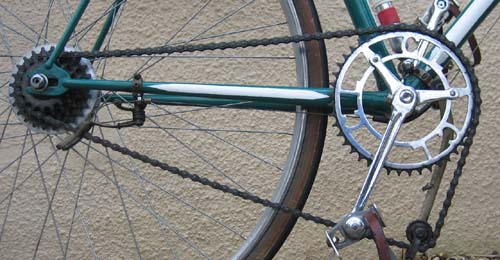
I have 2 Osgear shifters. I must admit, when I put one on for nostalgia’s sake it makes me appreciate modern gears. But the Osgear had two advantages over the old telescopic shifters, if the gear cable broke or the nipple pulled off (not uncommon in those days) the shifting fork just ran on the spokes and did no damage.
You could stop and unhook the spring on the rear shifting fork and then the chain could be put on any of the sprockets and continue your journey.
David is another ex-Leaguer who rode for North Cheshire Velo in the Manchester Division of the BLRC in the 50’s.
Posted: Friday 12th June 2020
This article appears in the following categories.
Upcoming Events
Whether you are looking for a gentle social meet up, or a 100-mile ride browse the community’s upcoming events and plan your next weekend outing.
